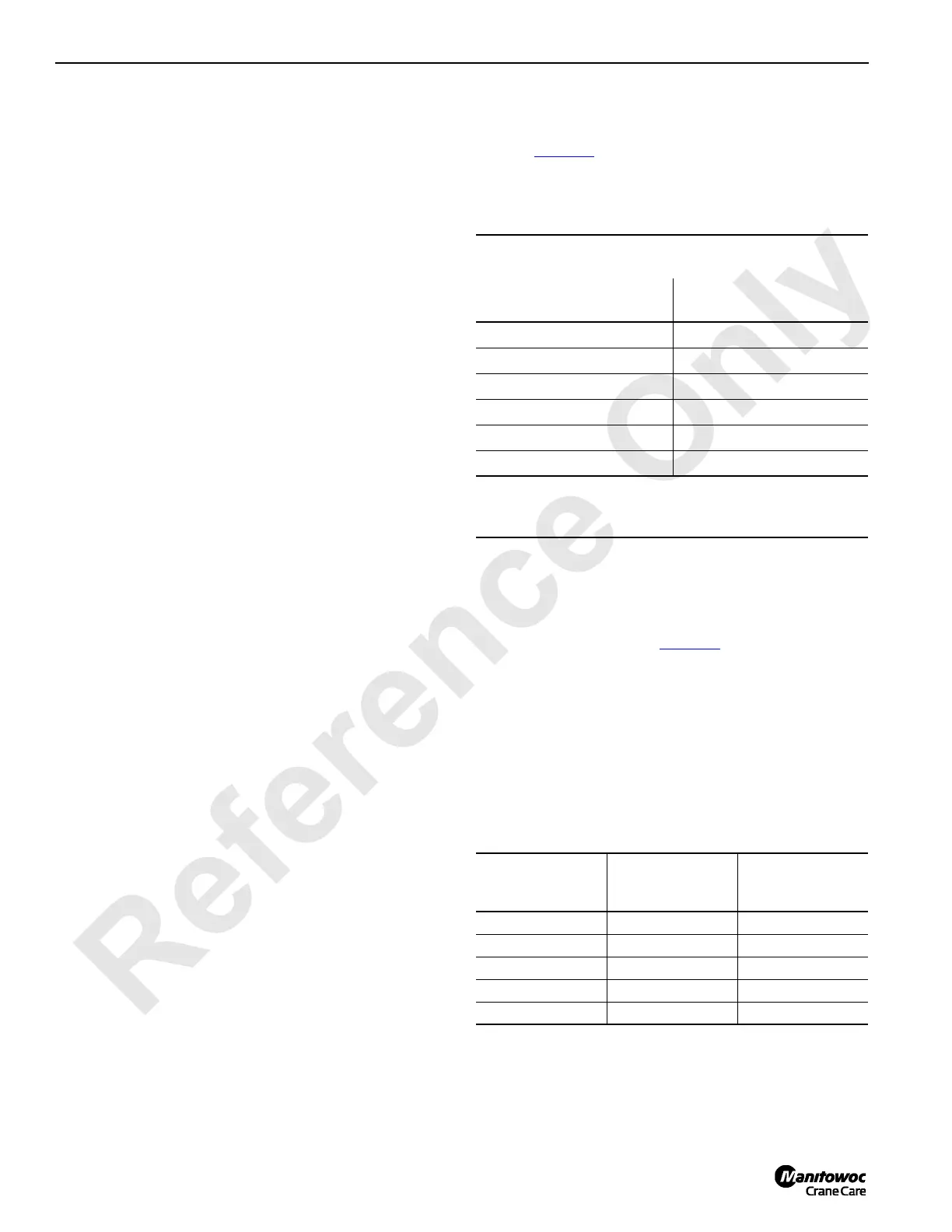POWER TRAIN 2250 SERVICE/MAINTENANCE MANUAL
7-2
Published 11-06-15, Control # 040-13
NOTE: Installing batteries with reversed electrical
connections will damage batteries and also crane’s
electrical system, voltage regulator, and/or
alternator.
Maintenance
Weekly – Check Electrolyte Level
1. Clean the top of the battery before removing the vent
caps. Keep foreign material out.
2. Distilled water should be used. Drinking water is,
however, satisfactory. Water with a high mineral content
(well, creek, pond) must not be used.
3. Never overfill the cells. Overfilling will cause electrolyte
to pump out, and corrosion damage will result.
Any spills on painted or metal surfaces must be
immediately cleaned and acid neutralized with baking
soda or ammonia.
4. Look for heavy deposits of black lead like mineral on the
bottom of the vent caps. This indicates that active
material is being shed (a result of overcharging).
An excessive amount of water consumption also
indicates overcharging.
5. Sulfuric acid must never be added to a cell unless it is
known that acid has been spilled out or otherwise lost —
consult your battery dealer for instructions.
Every 2 Months – Test Batteries
NOTE: Before testing a battery: determine that the
alternator is putting out current, that the current is
flowing to the battery, and that the voltage delivered
is within acceptable limits.
Hydrometer Test
1. The electrolyte level in each cell must be at its proper
height to get reliable readings.
2. Readings should not be taken immediately after water is
added. The solution must be thoroughly mixed by
charging.
3. Likewise, readings should not be taken after a battery
has been discharged at a high rate, such as cranking.
4. When reading a hydrometer, hold the barrel vertical with
the float freely suspended.
5. Draw the electrolyte in and out several times to bring the
float temperature to that of the electrolyte.
6. Take the reading across the bottom of the liquid level;
disregard curvature of the liquid.
7. Readings must be temperature corrected. Subtract
0.004 from the reading for each 10° below 80°F. Add
0.004 for each 10° above 80°F.
NOTE: It is the electrolyte temperature which is important,
not air temperature.
8. See Table 7-2
to interpret the readings.
Table 7-2
Hydrometer Readings
NOTE: For more specific hydrometer test information, see
the instructions provided with your hydrometer.
Open-Circuit Voltage Test
A sensitive voltmeter can be used to determine a battery’s
state-of-charge as shown in Table 7-3
.
The open circuit test is not as reliable in determining a
battery’s condition as the hydrometer test. This test is
acceptable for stored batteries, but not ones in use.
This test must not be performed on batteries being charged
or delivering power. Charging causes an increase in voltage
which may persist for an extended period.
Table 7-3
Open Circuit Cell Voltage
NOTE: Detailed test information is provided by the meter
manufacturer.
Temperature corrected hydrometer readings may be
interpreted as follows:
Hydrometer Reading —
SP. GR.
% Charge
1.260 – 1.280 = 100%
1.230 – 1.250 = 75%
1.200 – 1.220 = 50%
1.170 – 1.190 = 25%
1.140 – 1.160 = Very little useful capacity
1.110 – 1.130 = Discharged
If any two cells show more than 50 points (0.050 SP. GR.)
variation, try to recharge the battery. If the variation
persists, the battery should be replaced
% Charge Specific Gravity
Approximate
Open Circuit Cell
Voltage
100 1.260 2.10
75 1.230 2.07
50 1.200 2.04
25 1.170 2.01
Discharged 1.110 1.95

